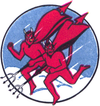
Operation Bodenplatte, launched on 1 January 1945, was an attempt by the Luftwaffe to cripple Allied air forces in the Low Countries during the Second World War. The goal of Bodenplatte was to gain air superiority during the stagnant stage of the Battle of the Bulge so that the German Army and Waffen-SS forces could resume their advance. The operation was planned for 16 December 1944, but was delayed repeatedly due to bad weather until New Year's Day, the first day that happened to be suitable. It resulted in almost 500 destroyed Allied airplanes.
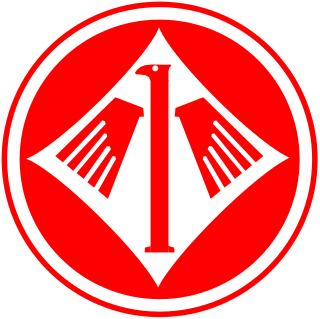
Jagdgeschwader 1 (JG 1) "Oesau" was a German World War II fighter wing created in 1939. Between 1940 and 1942, JG 1 operated primarily over the Western Front and northern occupied Europe. During the initial days of the war, JG 1 faced little resistance, apart from occasional Royal Air Force (RAF) excursions. The unit was rarely engaged in large-scale confrontations during this time.
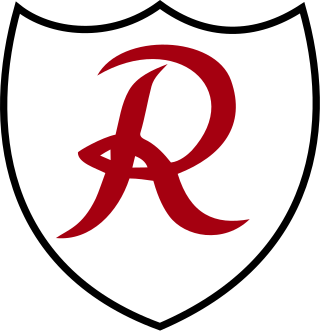
Jagdgeschwader 2 (JG 2) "Richthofen" was a German fighter wing during World War II. JG 2 operated the Messerschmitt Bf 109 and Focke-Wulf Fw 190 single-seat, single-engine interceptor aircraft.

George Earl Preddy Jr. was a United States Army Air Forces officer during World War II and an American ace credited with 26.83 enemy air-to-air kills, ranking him as the top P-51 Mustang ace of World War II and eighth on the list of highest scoring American aces.

The 357th Fighter Group was an air combat unit of the United States Army Air Forces during the Second World War. The 357th operated P-51 Mustang aircraft as part of the U.S. Eighth Air Force and its members were known unofficially as the Yoxford Boys after the village of Yoxford near their base in the UK. Its victory totals in air-to-air combat are the most of any P-51 group in the Eighth Air Force and third among all groups fighting in Europe.
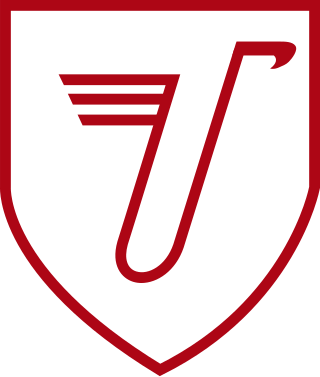
Jagdgeschwader 3 "Udet" was a Luftwaffe fighter wing of World War II. The Geschwader operated on all the German fronts in the European Theatre of World War II. It was named after Ernst Udet, an important figure in the development of the Luftwaffe, in 1942.
Jagdgeschwader 7 Nowotny was a Luftwaffe fighter wing during World War II and the first operational jet fighter unit in the world. It was created late in 1944 and served until the end of the war in May 1945.

Jagdgeschwader 26 (JG 26) Schlageter was a German fighter-wing of World War II. It was named after Albert Leo Schlageter, a World War I veteran, Freikorps member, and posthumous Nazi martyr, arrested and executed by the French for sabotage in 1923. The wing fought predominantly against the Western Allies.

Jagdgeschwader 6 Horst Wessel was a Luftwaffe fighter wing during World War II. Created late in the war as one of the last Jagdgeschwader, JG 6 fought on the Western and Eastern Fronts and in the Defence of the Reich over Germany. This period of the air war was characterised by few successes and heavy losses among the German fighter arm.

Jagdgeschwader 11 was a fighter wing of the German Luftwaffe during World War II. Its primary role was the defense of Northern Germany against Allied day bomber raids. Formed in April 1943 as a split from Jagdgeschwader 1, the unit primarily used the Messerschmitt Bf 109 and Focke-Wulf Fw 190.
Jagdgeschwader 300 was a Luftwaffe fighter-wing of World War II. JG 300 was formed on June 26, 1943 in Deelen as Stab/Versuchskommando Herrmann, from July 18, 1943 as Stab/JG Herrmann and finally renamed on August 20, 1943 to Stab/JG 300. Its first Geschwaderkommodore was Oberstleutnant Hajo Herrmann.
Jagdgeschwader 301 was a Luftwaffe fighter-wing of World War II. The order to form JG 301 was issued on 26 September 1943 and formed on 1 October 1943 in Neubiberg with Stab and three Gruppen (groups) as a "Wilde Sau" single-seat night fighter unit.

The Focke-Wulf Fw 190 Würger was used by the Luftwaffe during the Second World War in a variety of roles. Like the Messerschmitt Bf 109, the Fw 190 was employed as a "workhorse", and proved suitable for a wide variety of roles, including air superiority fighter, strike fighter, ground-attack aircraft, escort fighter, and operated with less success as a night fighter. It served on all the German fronts: Eastern Front, Western Front, North African Campaign and the Defence of the Reich.

William Thomas Whisner Jr. was a career officer and pilot in the United States Air Force, retiring as a colonel with 30 years of military service. He was a fighter ace with Army Air Forces over Europe in World War II and a jet fighter ace with the Air Force in the Korean War.

John Francis Thornell Jr. was a career officer in the United States Air Force and a World War II flying ace. He flew P-51 Mustangs and P-47 Thunderbolts with the 328th Fighter Squadron of the 352nd Fighter Group. He was the third highest scoring ace of 352nd Fighter Group, and one of the top USAAF aces of the European Theater of Operations and Eighth Air Force, with 17.25 aerial victories and 3 ground victories.
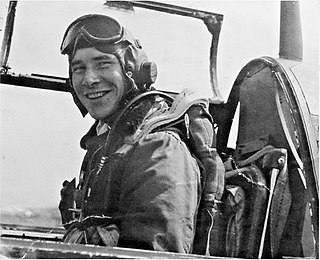
Leonard Kyle Carson Sr. was an American fighter ace and a colonel in the Air Force. During World War II, he was the highest scoring ace of 357th Fighter Group and one of the top Air Force aces of the Eighth Air Force, with 18.5 aerial victories.

Robert William Foy was a United States Army Air Forces fighter pilot and triple-ace who was credited with 15 aerial victories during World War II.
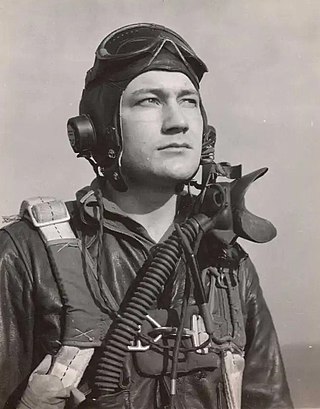
Raymond Henry Littge was an American flying ace in the 352nd Fighter Group during World War II, who was credited with 23.5 aerial victories.

Claude James Crenshaw was a United States Air Force lieutenant colonel and a flying ace, who was credited in destroying seven enemy aircraft in aerial combat during World War II.
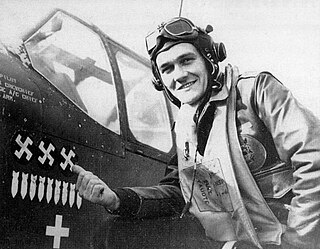
Donald Harlow Bochkay was an American fighter ace in the United States Army Air Forces. During World War II, he was credited in destroying 13 enemy airplanes in aerial combat, including two jet-powered Messerschmitt Me 262s.

